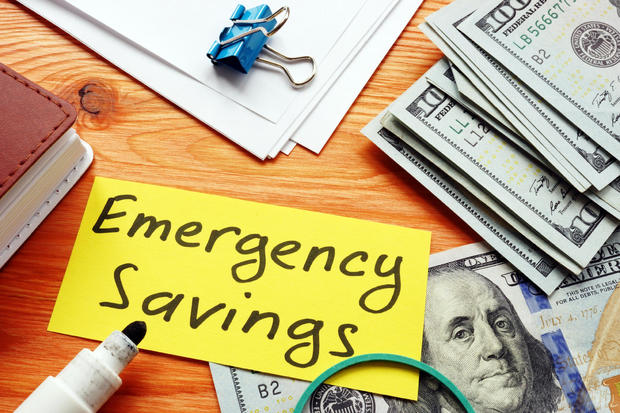Getty Images/iStockphoto
a emergency fund A must for anyone at any time. You never know what life can throw at you and things like a sudden job loss or a large medical bill can easily throw you into financial chaos. Even when the economy is strong, it’s wise to keep three to six months of living expenses in an emergency fund.
But in uncertain financial times, emergency savings are more important than ever. with Inflation is still high, Interest rates are still rising and a Recession on the horizonSecuring your future by setting aside money now is imperative.
“It’s always a good idea to save more money when there’s a recession going on and the Federal Reserve is trying to calm inflation by raising interest rates,” Christine Petersmark, an investment advisory representative at BridgeRiver Advisors in Bloomfield Hills, Michigan, previously said. CBS News. “Life will continue to be more expensive than what we’ve seen in the past decade. Having a larger safety net can reduce unexpected financial burdens, as well as reduce stress.”
Where you keep your emergency fund can make a big difference How fast it grows. You want somewhere safe where it can earn as much interest as possible so you have more to draw from when you need it. In this article, we’ll explore the best places to stash your rainy-day fund
The best place to keep your emergency fund
Building an emergency fund is important, but so is putting it in the right place. The following are the two best options.
High Yield Savings Account
High Yield Savings Account Providing many of the same benefits Regular savings account They do safe, is easy to use and you can access your funds at any time (fee-free, provided you are aware of any withdrawal limits). But they have one key difference: they offer interest rates that can be 15 times higher than regular accounts.
Currently, the average interest rate on regular savings accounts is around 0.24%. Rates on high-yield accounts average around 4% to around 5%. That means you’re leaving money on the table by parking your emergency fund in a regular account instead of a high-yield account.
For example, say you have $5,000 in an emergency fund. If you deposited that amount into a regular savings account at 0.24%, you’d have $5,011.99 after 12 months. Deposit that amount into a high-yield savings account at 4%, and you’ll have $5,200 after 12 months. Because interest compounds, the higher the interest rate, the faster your earnings will snowball.
Plus, since most high-yield savings accounts offer Online Bank, they tend to have lower fees. So, you can keep more of your money.
Thanks to the Fed rate hike, Now is a great time To open a high-yield savings account. Explore your options here to see how much you can earn
Certificate of Deposit (CD)
A Certificate of Deposit An account that offers you a fixed interest rate in exchange for agreeing to keep your money in the account for a fixed period of time (usually six months to five years). Like high-yield savings accounts, the money you deposit in a CD is protected by FDIC insurance Bank failed.
CD rate becomes more than High Yield Savings Account rate, but you will have to pay penalty if you withdraw the funds before the expiry date. This can be helpful if you’re worried you’ll be tempted to dip into your emergency savings before you need to.
You can ensure regular access to your funds by building one CD ladder Or opening multiple CDs with staggered duration lengths. As each CD matures, you can withdraw the funds as cash or reinvest them in a new CD at a higher interest rate.
Check today’s CD rates to see if a CD is the right choice for you.
Bottom line
There’s no reason you can’t have both a high-yield savings account and a CD In fact, splitting your emergency fund between the two can help you maximize your earnings while ensuring you always have access to funds when you need them.
Keep your emergency funds safe by exploring high-yield savings accounts and CD interest rates.


No Comments
Leave a comment Cancel